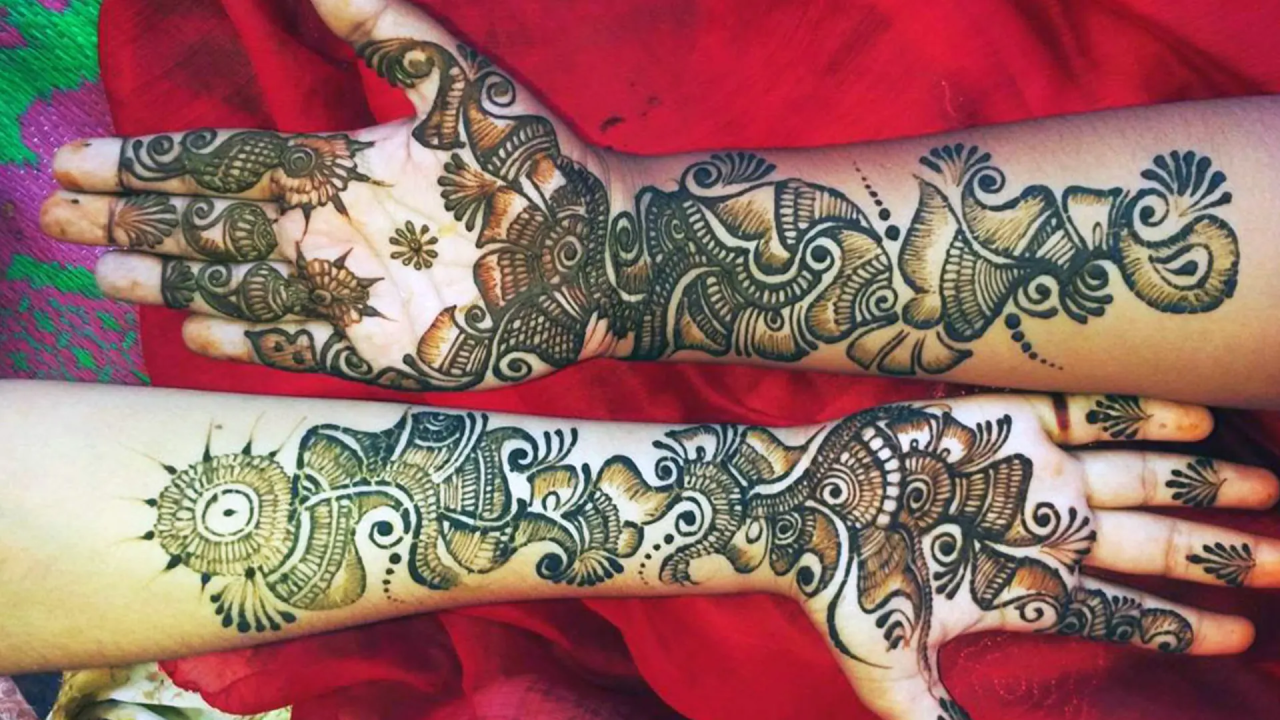
Simple Mehndi Designs: A Timeless Art of Intricate Beauty
Mehndi, also known as henna, is an ancient form of body art that has captivated people across cultures for centuries. It's more than just a temporary tattoo; it's a reflection of tradition, culture, and creativity. This article explores the diverse world of Mehndi designs, covering their history, various styles, occasions, ingredients, and more.
History of Mehndi: A Journey Through Time
The roots of Mehndi can be traced back over 5,000 years to ancient Egypt, making it one of the world's oldest forms of body art. The practice then spread to India and other parts of South Asia, where it became an integral part of cultural and religious traditions. Mehndi has been used to adorn brides and celebrate various festivals and milestones.
Ingredients and Preparation of Mehndi Paste
Mehndi paste is the heart of this art form, and its creation is a meticulous process. The primary ingredient is the dried leaves of the henna plant (Lawsonia inermis). These leaves are ground into a fine powder, which is then mixed with other natural ingredients such as lemon juice, tea, or essential oils. This mixture is left to rest for several hours to allow the dye to release.
Styles and Types of Mehndi Designs
Mehndi designs come in a myriad of styles, each with its unique charm. Here are some of the most popular types of Mehndi designs:
Traditional Indian Mehndi: Characterized by intricate and symmetrical patterns, traditional Indian Mehndi designs often include peacocks, paisleys, flowers, and swirls. These designs are applied to the hands and feet, covering them with delicate, beautiful patterns.
Arabic Mehndi: Arabic Mehndi designs are known for their bold, larger motifs and floral patterns. They tend to leave more skin exposed, creating a striking contrast between the intricate henna and the bare skin.
Pakistani Mehndi: Pakistani Mehndi designs combine elements of both Indian and Arabic styles, resulting in a fusion of detailed patterns and bold, prominent designs.
Moroccan Mehndi: Moroccan Mehndi is characterized by geometric shapes and patterns. It often includes diamond-shaped designs, creating a unique and eye-catching look.
Bridal Mehndi: Bridal Mehndi is one of the most elaborate forms of henna art. It covers the bride's hands and feet with intricate patterns, often featuring motifs that symbolize love, prosperity, and the couple's journey together.
Mehndi for Special Occasions
Mehndi plays a significant role in various special occasions and celebrations:
Weddings: Perhaps the most well-known occasion for Mehndi, it is an essential part of Indian and Pakistani weddings. Brides typically have their hands and feet adorned with intricate henna designs, and sometimes even the groom gets a small Mehndi design on his hand.
Festivals: Mehndi is a central element of festivals like Diwali and Eid. Families come together to apply Mehndi on their hands and share the joy of the occasion.
Karva Chauth: Married women in North India often apply Mehndi on Karva Chauth, a festival where they fast for the long life and well-being of their husbands.
Baby Showers: In some cultures, Mehndi is applied during baby showers to bless the expectant mother and celebrate the impending arrival of a new family member.
Mehndi as a Form of Self-Expression
Mehndi isn't just about tradition; it's also a form of self-expression and creativity. Many people, especially the younger generation, use Mehndi to make a style statement. They experiment with different designs, mix and match styles, and even incorporate contemporary elements into their Mehndi art.
The Healing Properties of Mehndi
Apart from its aesthetic appeal, henna has been used for its therapeutic properties. It is believed to have cooling effects on the body, making it a popular choice during hot summer months. Additionally, henna is used to strengthen hair, condition the nails, and treat various skin conditions.
Caring for Your Mehndi Design
Once you've adorned your skin with a stunning Mehndi design, it's essential to take proper care of it. To ensure the longevity and vibrancy of the stain, avoid contact with water for the first 24 hours, as moisture can lighten the color. Applying a mixture of lemon juice and sugar on the dried Mehndi can enhance the color and longevity.
If you're in search of beautiful and Simple Mehndi Design, look no further! Find out our this article and hundreds photos of सुंदर और आसान मेंहदी डिजाइन on another website, we'll show you how to easily create stunning and straightforward Mehndi designs and Back hand mehndi design that you can adorn your hands with.
Conclusion: Mehndi Designs - A Blend of Tradition and Artistry
In conclusion, Mehndi designs are a beautiful blend of tradition and artistry that have stood the test of time. From weddings and festivals to everyday self-expression, Mehndi continues to be a beloved and cherished form of body art. Its history, diverse styles, and significance in various cultures make it a fascinating and enduring art form that holds a special place in the hearts of many.
Whether you're a bride celebrating her special day, a festival-goer reveling in the joy of the occasion, or simply someone looking to adorn yourself with a touch of art, Mehndi designs offer a world of creativity and beauty waiting to be explored. So, embrace this ancient art form, let your imagination run wild, and wear your Mehndi design with pride and grace.